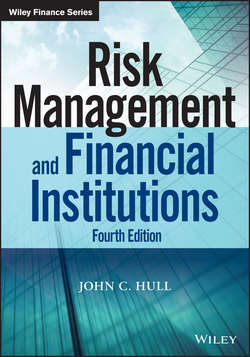Читать книгу Risk Management and Financial Institutions - Hull John C. - Страница 18
На сайте Литреса книга снята с продажи.
PART One
Financial Institutions and Their Trading
CHAPTER 2
Banks
ОглавлениеThe word “bank” originates from the Italian word “banco.” This is a desk or bench, covered by a green tablecloth, that was used several hundred years ago by Florentine bankers. The traditional role of banks has been to take deposits and make loans. The interest charged on the loans is greater than the interest paid on deposits. The difference between the two has to cover administrative costs and loan losses (i.e., losses when borrowers fail to make the agreed payments of interest and principal), while providing a satisfactory return on equity.
Today, most large banks engage in both commercial and investment banking. Commercial banking involves, among other things, the deposit-taking and lending activities we have just mentioned. Investment banking is concerned with assisting companies in raising debt and equity, and providing advice on mergers and acquisitions, major corporate restructurings, and other corporate finance decisions. Large banks are also often involved in securities trading (e.g., by providing brokerage services).
Commercial banking can be classified as retail banking or wholesale banking. Retail banking, as its name implies, involves taking relatively small deposits from private individuals or small businesses and making relatively small loans to them. Wholesale banking involves the provision of banking services to medium and large corporate clients, fund managers, and other financial institutions. Both loans and deposits are much larger in wholesale banking than in retail banking. Sometimes banks fund their lending by borrowing in financial markets themselves.
Typically the spread between the cost of funds and the lending rate is smaller for wholesale banking than for retail banking. However, this tends to be offset by lower costs. (When a certain dollar amount of wholesale lending is compared to the same dollar amount of retail lending, the expected loan losses and administrative costs are usually much less.) Banks that are heavily involved in wholesale banking and may fund their lending by borrowing in financial markets are referred to as money center banks.
This chapter will review how commercial and investment banking have evolved in the United States over the last hundred years. It will take a first look at the way the banks are regulated, the nature of the risks facing the banks, and the key role of capital in providing a cushion against losses.
